#fantasy subgenre
Text
The Subcategories of Fantasy

As an author who loves Fantasy, I wanted to help my fellow writers understand all of the different elements that fantasy can fall under, ranging from the well-known to the specific. I figured that doing so could help other writers like myself understand exactly what sort of story they’re writing, and how these stories differ from one another. I’ll also be giving examples of these types of stories, as well as my own thoughts on the different genres at the end.
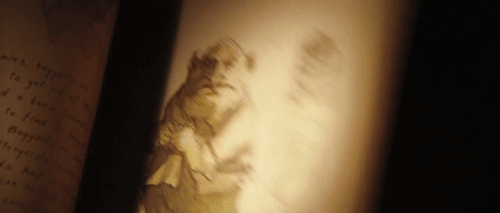
What is Fantasy?
Fantasy in its simplest term, is any form of media that diverges from the mundane reality of our ordinary everyday world in one facet or another. A story does not need to have magic, or dragons, or princesses to be called a fantasy story. While those are common motifs, in truth, all it takes to be considered fantasy is to not adhere to the real world in one form or another. Good Omens is a fantasy story, despite having no dragons or princesses anywhere. A Song of Ice and Fire has dragons and princesses, but magic is scarce and seldom ever seen. The Song of the Sea has a lot of magic, but a lot fewer dragons.
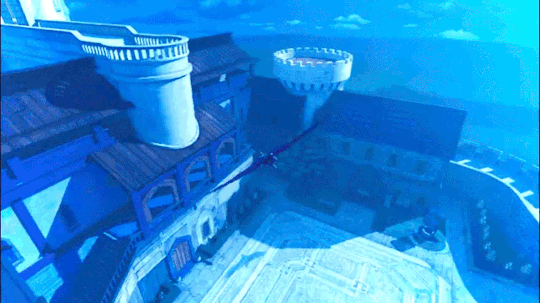
MEDIEVAL FANTASY
The story takes place in a fantastical world of the author’s design with a medieval or renaissance inspired setting, world view, and/or political structure. Renaissance Fantasy doesn’t really tend to exist on its own, so any setting with Renaissance aspects tends to just get lumped in with Medieval Fantasy. I don’t even really need to explain this one to you. It’s the most common subgenre of fantasy. A medieval fantasy does not have to be set in the real medieval period of Earth’s history, but rather, a medieval fantasy is any story set in a fantastical world that makes use of a medieval-based society as its setting.

HISTORICAL FANTASY
This is a story in which fantastical elements are included in real world historical settings. This is any historical setting where there’s a King of England but also a dragon or trolls to deal with. There’s almost this sort of unspoken rule that any story set in Ancient Greece will inevitably be Historical Fantasy. Arthurian Fantasy, Mythology Fantasy, and Fable Fantasy could all be considered subcategories of Historical Fantasy, since most instances of these genres would be classified as Historical Fantasy, though there are exceptions. As an example, Once Upon a Time and the Fables comics series are both Fable Fantasies, but are not Historical Fantasy. Likewise, Rick Riordian’s Percy Jackson-verse is clearly Mythology Fantasy, but is not Historical Fantasy. Classic examples of Historical Fantasy would include tales like Beowulf, The Journey to the West, and Robin Hood. It’s worth mentioning that technically, a story is not Historical Fantasy if it’s set in the era it was written in. However, the Illiad was set in Mycenaean Greece, Robin Hood’s rivalry with Prince John was a later addition to the folklore, and most Arthurian mythos was penned long after the supposed real world figure might have lived and died. But, any story set in a contemporary modernity, such as Percy Jackson, will eventually become Historical Fiction as time moves forward, though it clearly was not written to be that way.
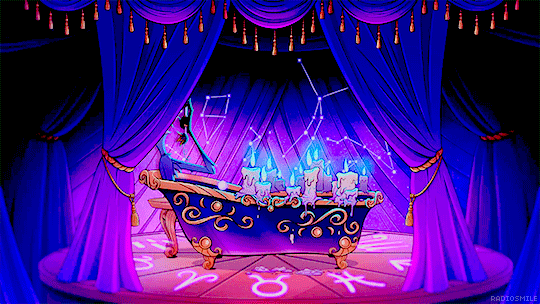
MYTHOLOGY FANTASY
Angels, Demons, Gods, the Underworld, mythological heroes, this is a supercategory that encompasses everything from The Chronicles of Narnia to Supernatural, as well as Good Omens, American Gods, Sandman, Rise of the Guardians, Percy Jackson, Paradise Lost, Helluva Boss and Hazbin Hotel, Smite: Battleground of the Gods, Teen Titans, Dante’s Inferno, and Lore Olympus. Some people get squeemish about lumping Judeo-Christian ideologies in with Mythology (even though it is a mythology) such that the Christian sub-category sometimes gets called Religious Fantasy or Bible Fantasy. But regardless, this is the category for any sort of fantastical work in which supernatural forces are at work. Some divide this section differently. For instance, some will say that since faeries are part of Irish mythology that faeries count as part of mythology fantasy, while others will argue that this is more for the religious aspect of fantasy, with things like vampires and faeries relegated to a subcategory of more generic fantasy creatures.

ARTHURIAN FANTASY
The story revolves around Arthurian mythos. Whether it’s set in the real world of Britain, a fantasy counterpart to Britain, or in some author-created setting, King Arthur is still King Arthur. Sometimes, though very rarely, Arthurian stories have little to no magic, fusing this subgenre with Historical Fiction and not Historical Fantasy. While Arthurian mythos has evolved over the years, the big players are practically household names. Most people are unfamiliar with Sir Galehaut and Sir Dinadin, but almost everyone recognizes Arthur, Guinevere, Lancelot, Merlin, and all the other big players in Arthurian folklore. However, Arthurian myth effectively spans the entire breadth of the Medieval Period, first being mentioned in the Annaels Cambriae which places Arthur in 6th Century Britain, and his stories continued to be written until Le Mort d’Arthur in 1485. Keep in mind, the Medieval Period is from 476 - 1500, and Arthurian mythos spans about 800-900 of those 1,024 years. Due to his story spanning so much time, many elements of Arthur’s story have been forgotten or quietly put aside over time. Try to tell someone that Arthur put every newborn born in the month of may on a boat and sank it to prevent the prophecy of Mordred from coming true, and you’ll probably get a bunch of horrified looks from people who swear up and down that the Good King Arthur would never do anything so cruel. Even other elements shifted around. Ask who mordred’s parents are, and you could argue Arthur, Morgan le Fey, Morgause, Anna, King Lot, and more. Depending on how deep down the rabbit hole you’re willing to go, you can read stories of King Arthur fighting his nephew Oberon for control of Fairyland. Arthurian mythos, like mythology fantasy, tends to get the curbside drive-by approach. People repeat the elements they’ve heard a million times, while never dusting off any of the lesser known elements that would give the story a breath of fresh air.

FABLE FANTASY
Technically, all Arthurian Fantasy falls under this umbrella. Fable Fantasy is the genre term for fantasy based on fables, folk tales, and folkloric figures. Robin Hood, Reynard the Fox, Fairy Tales, Mother Goose, Baba Yaga, if it has persisted through generations of storytelling, and has had a lasting impact on the cultures that know the story, it can be considered a Fable Fantasy. Any story that pulls from these elements can likewise be considered Fable Fantasy because they are pulling from these fabled origins. So, a retelling of Beauty and the Beast is a Fable Fantasy... unless the storytelling has twisted the story so much that it’s no longer in the Fantasy genre. For more variations of this genre, well-known pop culture characters, much like Robin Hood and Fairytale characters, can be considered Fable Fantasy. So, Frankenstein’s Monster, Dracula, Santa Claus, the Grim Reaper, Peter Pan, the Phantom of the Opera, the Wizard of Oz, and other commonly retold folk characters can be thought of as more contemporary Fable fantasies. As such, both Wicked and The Phantom of the Opera can be considered Fable Fantasy musicals, as well as the more obvious Into the Woods. Once Upon a Time and the Fable comic series are both modern Fable Fantasy stories. Not all Fable Fantasy narratives are retellings of classic folktales. Peter Rabbit, Alice’s Adventures in Wonderland, Peter Pan, and The Wizard of Oz have all become widely considered folkloric staples, despite being written in the 19th and 20th centuries. Over the Garden Wall, a Cartoon Network miniseries from 2014, is considered to be a modern fairy tale, despite not being an adaptation of any other story, but instead using the tropes and ideas common to traditional old-school fairy tales. When they enter the public domain, I suspect that Dr. Seuss’ characters will likewise be effectively Fable Fantasy, well-known characters that see use and reuse over and over again in other media. Shrek and Disenchantment take a satirical approach to Fable Fantasy, poking fun of Disney and other fairytale narratives and tropes.
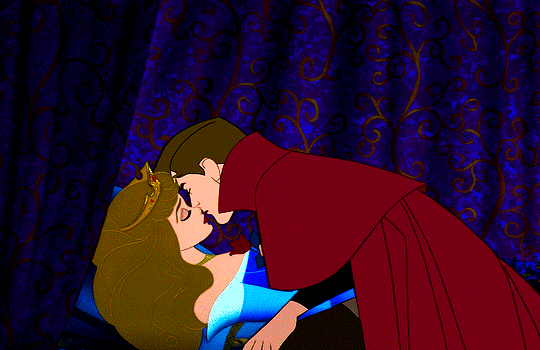
HISTORICAL ROMANTICISM
This setting often goes hand-in-hand with Arthurian Fantasy and Fairy Tales. This is any story that romanticizes and glorifies life in a historical setting. Popular variants include Medieval Romanticism, stories which romanticize medieval settings, Victorian Romanticism or Edwardian Romanticism, for stories that romanticize the time period between 1837-1913, and Period Romanticism, which is more of a blanket term that glorifies the eras popular with Period movies, namely, the 19th century, but sometimes earlier as well. Full of handsome princes, fair damsels, large palace-like castles, and knightly codes of honor, historically inaccurrate period gowns, debutante balls, and steamy Jane Austen-style love affairs, this story paints the past with the most optimistic and flattering image possible. Everything is flowery, poetic, and awe-inspiring. This is the type of setting Sansa Stark thought she was in at the start of A Game of Thrones before G.R.R Martin pulled the rug out from under her and revealed Westeros to be a Cynical Low Fantasy. By the very virtue of the company’s child-friendly marketing, Most Disney movies, and by extension, most movies set in the past aimed at children can likewise be categorized as Historical Romanticism, as they brush the darker side of history under the rug. The Princess Bride, Bridgerton, Don Bluth’s Anastasia, and most versions of Robin Hood and Arthurian mythos fall into this category. For contrast, Downton Abbey is not Edwardian Romanticism even though it tries to make life in the 1910s look glamorous, it’s also not afraid to blatantly point out the economic and socio-political issues that were going in in the world at the time. Downton Abbey does not sugar coat the darker side of history, and can therefore not be considered Historical Romanticism.

HISTORICAL CYNICISM
The exact opposite, Historical Cynicism is the name I give to settings that use the trope “The Dung Ages”. Like Historical Romanticism, the most popular variant of this category is Medieval Cynicism. These settings seek to make life in historical time periods look as miserable and depressing as possible. They are designed to make life seem bleak, undesirable, and disgusting. Monty Python and the Holy Grail and Disenchantment take a comedic approach to this, while A Song of Ice and Fire gives a more Epic Fantasy take. Sweeney Todd makes life in Victorian London look positively putrid, and that’s without the cannibalism subplot. The Witcher games seem to merge Medieval Cynicism with Dark Fantasy and Horror Fantasy. This subgenre hinges on Dark Fantasy, but the two are distinct from one another. Expect plenty of plagues, muted color pallets, a cruel aristocracy that enjoys crushing the lower classes under its heel, and mud or dung on everything.
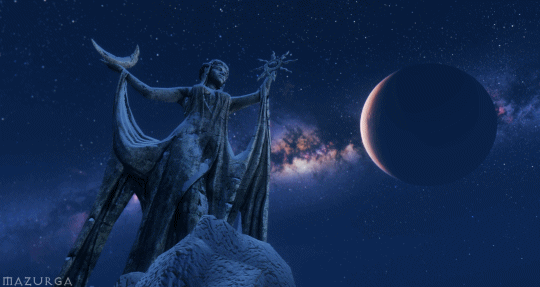
HIGH FANTASY
Magic and fantastical elements are abound in this setting. Expect wizards, dragons, fantastical races, and more. Very frequently overlaps with Epic Fantasy, though they are different. The Lord of the Rings is classic High Fantasy. Most Dungeons & Dragons settings are also High Fantasy, as is The Legend of Zelda. Avatar: the Last Airbender is a High Fantasy Wuxia show, though Legend of Korra veers more toward Historical Fantasy, Steampunk, and Magitech Fantasy with its 1920s Shanghai meets New York City hub location of Republic City. The Elder Scrolls is also a High Fantasy, with plenty of elven races, the Beast Races, and star signs that actually impact those born under them. Each province has its own sort of vibe or subgenre, with High Rock being more Medieval Romanticism while Skyrim is more Dark Fantasy or Medieval Cynicism, but as a whole, Tamriel falls under the High Fantasy umbrella.

LOW FANTASY
A medieval setting where magic and fantastical elements are rare, if not nonexistent. A Song of Ice and Fire is an excellent example. Magic is real and does exist, but it only rarely comes into play. Magic is extremely scarce, and most people one might meet are humans. Even the sight of someone casting the simplest spell is so rare in Westeros that it’s practically unheard of, and the few supernatural elements that do exist in the setting live far out into the wilderness, rarely being seen by people. It’s quite rare to find completely fictional fantasy settings with no magic whatsoever, but they do exist.

EPIC FANTASY
This is any fantasy story on an epic scale. I’m talking well over 50+ named characters. A Song of Ice and Fire, The Wheel of Time, Lord of the Rings, all of these are Epic Fantasy. Yes, these stories usually end up with long book series and a lot of words behind them, but I am defining a genre, not a reading level. Epic Fantasy is about scope, not page length. Common sights in Epic Fantasy are grand battles, multiple POVs, world-spanning events, extremely high stakes, very powerful players in the narrative, and The Final Battle Between Good and Evil.

QUEST FANTASY
Any fantasy work which is primarily driven by The Epic Quest. Often overlaps with Chosen One narratives. Lord of the Rings, Eragon, The Legend of Zelda, Avatar: the Last Airbender, and the Percy Jackson books are all examples of Quest Fantasy. The bulk of the narrative is centered on The Journey and the trouble the heroes run into along the way, or are otherwise all about The Adventure, not the destination. Our band of heroes have a goal given to them and the story is focused on following the heroes on their journey. However, this is not strictly a Chosen One category. The Legend of Korra is a Chosen One Fantasy, but is not a Quest Fantasy because Korra’s main objective changes every season. Percy Jackson toes the line due to the Oracle’s prophecies, but I wouldn’t call him a Chosen One because his birth wasn’t written in the stars or anything. He just happens to be a child of Poseidon and at the center of the story. If you switched him out for Nico di Angelo or Jason Grace, the story is still functional. In Lord of the Rings, Aragorn is the True King, but Frodo is the protagonist, so I wouldn’t call Lord of the Rings a Chosen One Fantasy either. This can also tip into other genres. Monty Python and the Holy Grail is a Quest Fantasy. The entire premise of the movie is Arthur and his knights questing for the Holy Grail. Likewise, The Princess Bride is all about Wesley’s quest to rescue Princess Buttercup from Prince Humperdink. Treasure Planet is a steampunk quest fantasy telling the story of Jim’s search for Flint’s treasure, where the journey there is the bulk of the story. Sinbad: Legend of the Seven Seas is a quest fantasy with elements of Historical Fantasy and Mythology Fantasy all about Sinbad’s perilous voyage to the edge of the world to save his friend’s life.

DARK FANTASY
It’s like normal Fantasy, but bleaker and darker. The Witcher and Skyrim are good examples of Dark Fantasy, where monsters roam the wilderness, and people live in fear of the unknown beyond the safety of their villages. The general tone is more cynical, desolate, or hopeless. Some Dark Fantasy is more about just being gloomy or creepy. The movies Labyrinth and Dark Crystal are two good examples of a Dark Fantasy that’s less bleak as they are weird, yet still dark. The Black Cauldron is a perfect example of a Dark Fantasy with a dreary and macabre aesthetic paired with a genuinely horrifying necromancer villain. Pan’s Labyrinth is another good example of a Dark Fantasy. Over the Garden Wall and A Tale so Dark and Grimm are both Dark Fantasy stories as well as Fable Fantasies, reveling in the darker aspects of Grimm fairy tales.

HORROR FANTASY
It’s like Dark Fantasy, but scarier. Expect there to be horrifying monsters unlike any seen on earth. Your protagonist is probably either hunting or being hunted by something horrible. Either a monster is trying to kill them, the world is trying to kill them, the gods or demons are trying to kill them, or magic is trying to kill them. Again, The Witcher is a great example of Horror Fantasy. Geralt is a hunter of monsters, and often fights things like Werewolves, ghouls, wraiths, and lesheys. Red Riding Hood (2011) is a great example of a vaguely medieval Horror Fantasy. Depending on where you stop the line at what’s horror, what’s fantasy, and what’s Horror Fantasy, you could justify just about anything as Horror Fantasy. From The Elder Scrolls V: Skyrim with its undead Draugr and vampire clans, to Resident Evil VII with its vampires, or even certain Scooby-Doo! media (though Scooby-Doo! is certainly on the mild end of horror.)

PARANORMAL FANTASY
Unlike Dark Fantasy or Horror Fantasy, Paranormal Fantasy takes horror elements and spins them to be more romantic. This is where you’d slot in romantic or atmospheric ghost stories. Tales of witches and vampires in a macabre setting where they’re not the villains. The Addams Family fits the Paranormal Fantasy, as does Sweeney Todd, Sleepy Hollow, The Phantom of the Opera, Hotel Transylvania, most Scooby-Doo! media, Beetlejuice, the Halloweentown movies, The Nightmare Before Christmas, or Hocus Pocus. Basically, if it could be a child-friendly Halloween story, or was made by Tim Burton, it’s probably Gothic Fantasy. I guess you could also call this Monster Fantasy, Gothic Fantasy, or Spooky Fantasy.
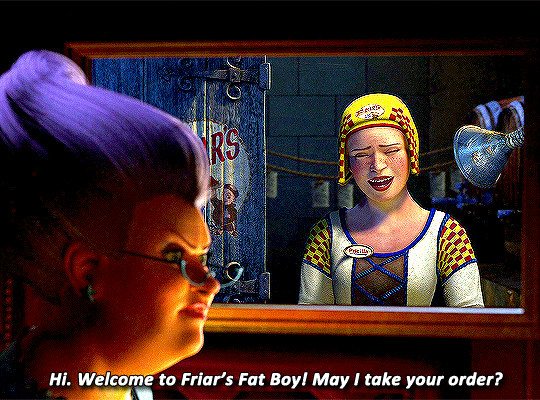
CONTMPORARY FANTASY
The setting is medieval with castles and princesses, but there’ll also be modern conveniences or nods to pop culture in the land and setting. Dave the Barbarian is a good example of this. The royal family are all barbarians (which basically just means vague warriors that wear fur loincloths), but then they also have malls, and Dave made a megaphone out of a squirrel, some string, and a megaphone. Shrek does this too, especially in Far Far Away with nods to Starbucks and Burger King, among other modern franchises. Disenchantment also uses this as a basis for comedy. Typically, Contemporary Fantasy only uses modern conveniences in a medieval setting as more or less sight gags, punchlines, or to poke fun of corporations and consumerism. These are also the fantasy stories most likely to reexamine tropes and shine a critical light on the genre, whether by showing the farm-boy turned king being royally inept, the mental issues caused by locking the princess in a tower for years of her life, or how quickly princesses married the first man that came along without so much as a conversation beforehand.
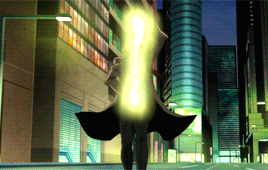
URBAN FANTASY
The wizard has a smartphone, the prince has a Grindr, and the city watch patrol the streets on motorcycles. A standard fantasy world has come to the modern age, with skyscrapers, internet, cars, and cellphones. The familiar world gives the audience a firmer foot to ground themselves in this sort of story, compared to something set in the past, but it has its own hurdles. Namely, a modern world still needs a rich history. You also need a story that can’t be solved with a gun and an internet connection. Urban Fantasy is a very broad genre, from Hidden World Fantasy like Percy Jackson or Harry Potter, to Merged World Fantasy like RWBY. There’s also some head scratchers like the Warriors Cats books. It’s definitely Urban Fantasy. A cat society living in the forest is a fantasy, and the story is set in our modern contemporary world. But labeling the series beyond Urban Fantasy is where it gets tricky. Isekai borders on Urban Fantasy, as the magical overlaps with the modern world. The Magic Treehouse and the Arthur Spiderwick Chronicles are two great examples of Urban Fantasy in children’s literature. Goosebumps is Urban Horror Fantasy.

ISEKAI FANTASY
These are stories in which an ordinary human (or group of humans) are transported to another world in order to learn a lesson, grow, and come back home wiser, stronger, and ready to face the problems they ran away from. The Wizard of Oz, Peter Pan and Wendy, Alice’s Adventures in Wonderland, as well as movies like Stardust, Coraline, and Spirited Away, or TV shows like Over the Garden Wall, The Owl House, and Amphibia are all prime examples of this type of story. The Chronicles of Narnia is an excellent example because as the series goes on, the older Pevensee children stop needing to go back to Narnia. By Voyage of the Dawn Treader, Peter and Susan have learned all they need to from the other world, and don’t go back, leaving only Edmund and Lucy to go with their cousin instead. Because their arcs are over, they have no reason to return.
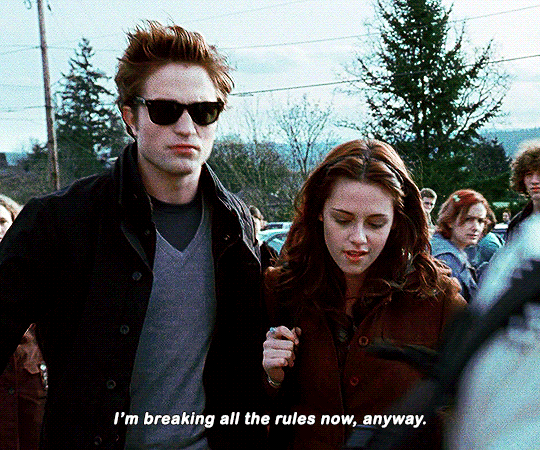
ROMANCE FANTASY
It’s a romance novel with supernatural elements. Usually, it’s a human falling in love with something inhuman, which we often call Paranormal Romance. However, this can also include stories of a fairy falling in love with a dwarf, so there’s a wider net here. This isn’t just a story with a romantic subplot, this is your Romeo and Juliet type love stories. Your Beauty and the Beast retellings. The romance is the main plot, and the supernatural elements simply make the romance more exciting or the problems of the couple more entangled in cultural baggage. Obviously, Twilight is a popular example, as is The Cruel Prince, The Captive Prince, and Of Beast and Beauty by Stacey Jay.
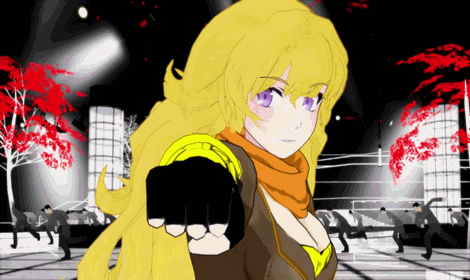
MAGITECH FANTASY
This is when a fantasy setting has magic-powered technology. The guardians and Divine Beasts from Breath of the Wild are a fantastic example of Magitech in a medieval fantasy setting, as are the steam-powered automatons of the Dwemmer in The Elder Scrolls. The Legend of Korra sort of fits here. The world of Avatar has advanced to include airplanes, cars, and radios, none of which are powered directly by bending, but benders do work in power plants, performing lightning bending to generate electricity. It’s certainly a middle ground between steampunk and magitech fantasy. However, the world doesn’t have to necessarily include technology, any setting where magic is a power source for anything can work. Jak and Daxter: The Precursor Legacy is a great example of Magitech Fantasy. Eco is a natural magical resource that give magical powers and effects. So, having doors that open when exposed to the electrical energy of blue eco makes sense. And while it’s never stated, Jak II has many automatic doors in Haven City that may very well run on an electric power grid fueled by blue eco veins. But eco largely gets dropped in the sequel games in favor of guns, though the guns themselves may actually be powered by eco as well. So it’s hard to say. RWBY surprisingly fits into Magitech Fantasy. Like Eco, Dust is a magical natural resource that can be used to create magical effects. The world is full of airships, shape-changing weapons, bullets and other weapons being infused with dust to give them magical effects, and Penny, a definitely real girl.

GASLAMP FANTASY
This is what happens when Steampunk has just enough fantasy elements to land in the Fantasy section. Gaslamp Fantasy is any fantasy story set in the era of gaslamps, while still incorporating fantastical elements. Dracula, Springheel Jack, Mary Poppins, Peter Pan, Sherlock Holmes vs Dracula, basically, as long as it’s set in a Victorian setting and has supernatural elements, it counts as Gaslamp Fantasy. However, it’s definitely one of the less popular subgeneres, and I couldn’t really name any others.
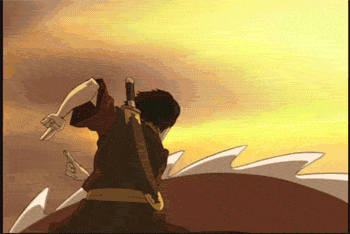
WUXIA
A fantasy setting that focuses more on East Asian history, folklore, and mythology to craft its setting. Wuxia is a broad term, including everything from Spirited Away to Crouching Tiger, Hidden Dragon and Dragonball. However, often times in fantasy, European-inspired regions are complicated and diverse, while Asian-inspired regions are homogenizing, if not orientalist. We can differentiate Irish, Scottish, and Welsh folklore from English, but somehow, not treating all Asian cultures like they’re the same is too taxing for some writers. So, if you’re going to tackle writing Wuxia Fantasy, do your homework, try to make the cultures thorough and intricate, and don’t profess yourself an expert on another person’s culture if you’re not Asian yourself.
316 notes
·
View notes
Text
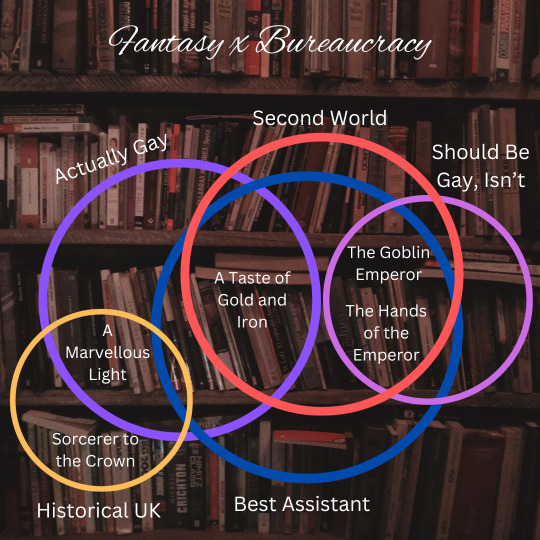
My greatest accomplishment of 2024 to date. Possibly the best thing I'll do all year.
("Assistant" is of course a loose general term for the relevant characters. And Csethiro is wonderful. But I'm queer, and AO3 understands my need for Csevet fic.)
#fantasy#fantasy book rec#sorcerer to the crown#a marvellous light#a taste of gold and iron#the goblin emperor#the hands of the emperor#there may be an official subgenre term for what I call fantasy bureaucracy#but I am not a fantasy author so I don't know it
151 notes
·
View notes
Text
types of fantasy subgenres - writing help
high / epic fantasy - a genre of fantasy that holds its own world and creatures. examples of this could be J.R.R. Tolkien's LOTR, or C.S. Lewis' Chronicles of Narnia
low fantasy - a genre where there are regular magical happenings in "our" world—such as a magical school, or people with magical abilities. this could be found in J.K. Rowling's Harry Potter, or Studio Ghibli's Spirited Away
urban fantasy - essentially low fantasy, only it takes place in an urban setting such as a big city. an example of this is Cassandra Clare's City of Bones
sword and sorcery - fantasy that is centred around swords, magic, and witchcraft. it is a subgenre of high fantasy. a book is Robert E. Howard's Conan series
dark fantasy - fantasy elements mixed with horror. The Atlas Six, by Olivia Blake
fable - a story with a moral lesson
arthurian fantasy - anything derived from the tales of King Arthur (the Sword in the Stone, etc.)
crosswords fantasy - essentially where the main character crosses between their world and a fantasy world. an example of this could be Lewis Carroll's Alice in Wonderland
dragon fantasy - what it sounds like.
historical fantasy - a cross between the historical fiction and low fantasy subgeneres. it could be set in a royal court filled with goblins, for example, in a time that was once present on earth.
#any other popular ones?#fantasy#writerblr#creative writing#lyralit#writing tips#writers#writers block#writing#writing ideas#writblr#writing prompts#story writing#women writers#writeblr#writerscorner#writing community#subgenre#genres#ya fiction#novels#readerblr#writing help#writing resources
2K notes
·
View notes
Text
No "OP, you forgot" category for this poll because I'm well aware there are many more fantasy subgenres (and sub-subgenres) people love, but I think the majority can fall somewhere within the parameters above. If I did miss a major one, tho, please tell me in the tags!
Interpret this as you will - you can pick the genre which you think has the best overall body of work, the one with your very favorite work, the one that has the most potential... whatever feels right :)
#tumblr poll tuesday#may be part of a subgenre series we shall see#fantasy#fiction#polls#tumblr polls
25 notes
·
View notes
Text
Criticism towards that isekai maid webcomic are a lil silly with the way they say the author is exaggerating about how frequent maids get slapped by isekai-ed mcs when they're commenting on why the trope even exists in the first place when the mc comes from a time more informed about class and work dynamics and it's not the only trope addressed by the webcomic. Trying to make this seem like a exclusively english-speaking audience/westerner nitpicking when in-house maids are still a thing in Asia, immigration is a hell hole and xenophobia is rampant?? A commentary on the problematic themes in the rofan/isekai genre is suddenly too preacy but dozens of manhwa awarding its entitled narcissistic mcs are ok, groundbreaking even? Who's picking needles from haystacks here?
#yes I will defend this webtoon to my last breath#i didn't think I'd find a webcomic that deconstructs the reoccurring issues in this subgenre of fantasy manhwa in my lifetime#so yes I will defend it#is the timeline convoluted? sorta. rereading it should refresh your memory#i thought I'd have to make my own comic and I'd be dead before i cough out a first draft#this isekai maid is forming a union#also! asia severely needs unionization! i can't be paid shit bc my company is greedy af#apparently manhwa fans don't like it much...shocker
31 notes
·
View notes
Note
I wish there were more ganon fans that just didn't make him into a misunderstood little meow meow and made him into a complex leader who can be right about his reasons but still have red flags and be selfish
I'm glad people have fun with him, especially given the flurry of attention he received recently, and I'm glad there's a wide breadth of content to enjoy. I do prefer that version you're describing here as well though! I call this reading of the character "Morally Dark Gray Ganondorf"; the kind that definitively has a point, whose whole psyche makes a twisted kind of internal sense that one may absolutely find compelling, awe-inspiring and/or devastating, but who is also unforgivable the second you step outside of his own selfish "me against the world" conception of reality --while also understanding why he can't conceive of anyone as anything but pawns in a much larger game of chess played against gods who kind of demand to be opposed in absolutes. Still: all of this is cool and swell, but, also, do you know how many war crimes you're doubling down on just because you refuse to be owned??? Too many!! The answer is: too many!!
#asks#thoughts#ganondorf#thank you for the ask!!#I mean to be fully transparent I have Things that chronically irk me in some of his sub-flavors of blorboification#I do like some thoughtful zelgan occasionally but there is a subgenre that is just... so objectifying and orientalist and I Can't#when he's used as some sort of prop for Privileged Girlie Fantasy wanting to ruffle her feathers with a Dangerous Exotic prospect I just...#like it's not a bad setup if it's then deconstructed in some way but it never is it's just 100% played straight#instead of being like#an actually really compelling reason to revolt against hylian perception of gerudo culture and the role gerudos serve in that society#(aka being dangerous and enticing but also in great need of being assimilated into “normalcy” as they are consumed)#(ganon being kind of the Opposite of that mindset it pains me to see him flattened in that way like the rest of his people tend to be)#anything that rubs him off his viciousness either through Sexyfication and/or Himboification#or making him Possessed by Demise so that means he's secretly Good and Baby#is not for me :(#let him be mad!!!#let him be such a contrarian he will break everything he cares about as well as himself with his own bare hands just because fuck you!!!
23 notes
·
View notes
Text
What makes epic fantasy ✨epic✨? Where did the genre come from and what are its defining traits and tropes? We sat down with expert Celeste Conowitch from Kobold Press, to talk about this fascinating genre!
#writing#fantasy#worldbuilding#epic fantasy#fantasy writing#fantasy subgenres#fantasy tropes#writing epic fantasy
10 notes
·
View notes
Text
Post S2-Izzy Hands isekai
#a subgenre of fantasy/anime -a character is transported from their world into a new one(often after death)#a trope USUALLY used in romance/harem anime- where a normal guy goes into a fantasy world full of people that actually want to fuck him#DO YOU SEE THE VISION#israel hands#izzy hands#ofmd#ofmd s2#ofmd season 2#ofmd s2 spoilers
8 notes
·
View notes
Text
romantasy is not a real thing and I will die on that hill whether or not Goodreads gives it a category that most likely will be retired within the next five years when everyone moves on to the next trend
#romance novel blogging#can't become a genre (not a subgenre... a genre)#within a few years#nooooope#i should add--fantasy romance is absolutely a thing#fantasy with a heavy romance subplot? a thing for sure#romantasy? is a marketing grab
9 notes
·
View notes
Text
youtube
#music#new music#detachment#independent artist#fantasy#Frankie exe#female artist#female producer#young artist#electric music#subgenre music#Youtube
3 notes
·
View notes
Text
as I see the rise in “cozy fantasy” books i’ve been thinking about these ursula k. le guin quotes as i notice cozy books get more popular in real time, my brain went right to “oh boy...how is publishing (and therefore) the larger book community (like booktok) going to ruin this:
“Fantasy becomes a commodity, an industry. Commodified fantasy takes no risks: it invents nothing, but imitates and trivialises.“
“...the passionately conceived ideas of the great storytellers are copied, stereotyped, reduced to toys, molded in bright-colored plastic, advertised, sold, broken, junked, replaceable, interchangeable.“
no offense but i’m already tired of seeing so many *white (american) authors get praise (and all the attention) as readers continually push these books as the “cozy” novel (L&L😤) when they have already existed in other countries / publishing spaces...
#ursula k le guin#*sigh can predict already how publishing will take this interesting subgenre and run it into the ground#so many random fantasy books being slapped on with the label 'cozy' when ppl literally dont understand what that means...#also how did these authors dictate what's cozy?#when they literally know nothing outside of the ghibli and cottagecore aesthetic#readers are also to blame...like yall expand your mind and read not just white authors#booktok#what about poc writers???#booklr#cozy fantasy#fantasy books
31 notes
·
View notes
Text
The cozy-fication of genres needs to stoppp haha like stoppppp
#''cozy horror'' booktokers need to get a GRIP#esp when none of them can fucking agree on what ''cozy horror'' means#like cozy fantasy sure ok i get it#''cozy thrillers'' babe if its cozy its a COZY MYSTERY. WHICH IS ALREADY A THING.#but cozy horror takes the fucking cake like u go in the comments and half of em are like 'that book was Not cozy' and 'wtf is cozy horror??'#like. its such a useless subgenre-ization for no reason like just stop 😩#disgruntled octopus
10 notes
·
View notes
Text
YA, like any other market, is dynamic. So, here are some gems that people have missed out on because people would rather complain about books that were published over a decade ago than read a new one.
The Undead Truth of Us by Britney S. Lewis: After her mother's death, Zharie is convinced that zombies are everywhere. Navigating grief and her mother's secrets, this heart-wrenching debut is about the monster inside all of us.
The Ghosts of Rose Hill by RM Romero: Sent to live with her aunt in Prague for the summer, Ilana tends to a hidden graveyard surrounded by roses. While there, she experiences ghosts and wonders and magic.
Bad Witch Burning by Jessica Lewis: Known for communicating with the dead, Katrell is forced at a crossroad after her mom kicks her out. Suddenly, the dead are louder and her magic has gained unexpected consequences.
From Dust, a Flame by Rebecca Podos: Hannah wakes up with a curse brought on by her family's legacy. Tracing her mother's footsteps, she explores the generational trauma and the monsters that her family won't let go.
The Astonishing Color of After by Emily XR Pan: Leigh knows her mother has turned into a bird. She goes to Taiwan to visit her grandparents and to understand why, but the past has way of showing deeper truths.
Elatsoe by Darcie Little Badger: Drawn by her cousin's ghost, Ellie is compelled to solve his murder. But the town is full of secrets that even her faithful ghost dog can't sniff out.
Tess of the Road by Rachel Hartman: Following a series of events at her sister's wedding, Tess runs away, joins an old friend, and goes on the road in search of a mythical serpent that sleeps under the earth.
Monsters Born and Made by Tanvi Berwah: Born in a cruel caste system, Koral takes matters into her own hands by cheating to join a dangerous tournament. Full of monsters on sea and land, survival has never been more important.
#the undead truth of us#britney s lewis#the ghosts of rose hill#rm romero#bad witch burning#jessica lewis#from dust a flame#rebecca podos#the astonishing color of after#emily xr pan#elatsoe#monsters born and made#tanvi berwah#anyone else need recs?#i have a lot of feelings about the market because there are so many books that are being published#but aren't getting the recognition that they deserve#and this is only a small sample of ya fantasy books (by fantasy i man everything under its subgenre)#the ya contemporary books have been knocking it out of the park with mental health and coming of age
69 notes
·
View notes
Text
Is the garden event cozy horror
#do NOT talk to me about 'cozy horror' this is a joke#I'm a professional horror writer aksgslhsksh#fallen london#you can't make horror cozy without fundamentally altering the genre and you can't change my mind#cozy mystery and cozy fantasy are real subgenres#cozy horror..... it don't work that way
9 notes
·
View notes
Text
Biggest gripe with the mainstream heterosexual romance genre is that so often when the guy is this fucked up amoral powerful asshole criminal/ceo/magical being (depending on the subgenre) the girl is still just... a normal person.
It's not for me but I can wrap my head around there being an attractive fantasy in the idea of this super dangerous man cossing every singe moral line because he's just so in love. It's not healthy but it can be interesting, sure. But why doesn't she get to be a weirdo? Why is she just a normal woman with a supermodel face?
Give me real freak4freak shit. I'm not interested in her getting locked in the sex dungeon if i can't believe she would, if given the opportunity, immediately do the same to him. No more moral female mcs they need a bodycount in the double digits and I do NOT mean sex I mean murder. All of you on the internet saying you support women's wrongs, well where are the wrongs, hm?
"Oh the women are normal because they're supposed to be relatable to the reader" well i'm a reader and I'm an off-putting little weirdo and I would like to see myself reflected in media, thanks.
#romance#books#book club of one#in the fantasy subgenre these girls do regularly get to be magically powerful in some way but they rarely get to do the atrocities#i get why the girl isn't killing people in romance that's more grounded in reality and/or trying to portray an actually healthy relationshi#but in the darker stuff?? c'mon now step it up. it does exist but the ratios of fucked up men to women are so skewed#and when it does happen it's often a corruption arc where the guy i already fucked up#and her fucked-up-ness comes from being asociated with him#and sure ok corruption arcs those are fun but WHERE is the story where she does some cannibalism in the prologue huh?
5 notes
·
View notes
Text

#where does your story fit?#writing#fanfiction#reading#cheat sheet#writing advice#books#L-A opinion#writer#author#fiction#genres#subgenres#writing ideas#writer tips#writing exercise#fiction writing#novels#fantasy#horror#mystery#romance#science fiction#thriller#suspense#western#dark fantasy#writing help#writblr
31 notes
·
View notes